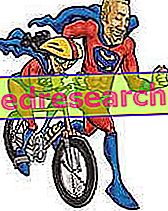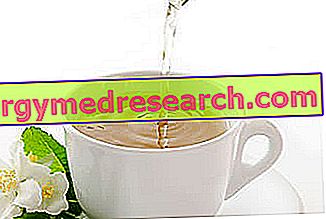Edited by Massimo Armeni
Being a graduate in Specialized Kinesiology (I finished the 4 years of school and the final thesis) I will talk about this still too little known - at least in Italy - Science.
Applied Kinesiology, or Specialized Kinesiology Science, is the science that studies body language, also called "functional neurology".
Also due to the scarce popularity in Italy, many people confuse kinesiology with kinesiology ; there is a big difference between the two, since kinesiology is nothing but the study of muscular mechanics.

These variations are aroused in response to sensory stimulations, whose impact is mediated by central and peripheral neural mechanisms.
These stimulations then allow the Kinesiologist to interrogate the spinal, neurovegetative and chemical system by immediately monitoring the human body and verifying whether the correction applied is tolerated or not by the system.
Parallel to Dr. Goodheart, another chiropractor, Dr. Thie, a colleague and close friend of Dr. Goodheart, developed a perhaps more advanced and more integrated kinesiological system than the basic AK, the TFH (Touch For Health).
In this system the fundamentals of Chinese medicine and chiropractic were merged with one another: the result was a powerful system of evaluation and correction of many body stresses, monitored through the kinesiology test.
Later, while the AK was taught only to graduates in medicine or to chiropractors, the SK (Specialized Kinesiology) founded on the TFH system, by the will of dr.Thie himself, was also disclosed to non-doctors.
At present, AK and SK, daughters of the same mother, share most of the basic chiropractic and kinesiological techniques; while AK has essentially become a diagnostic and therapeutic science, SK works more deeply, trying to develop human potential at all its levels, making the II - Innate Intelligence - of the human body reorganize the systemic defenses of coping with stress, as DDPalmer's Chiropractic Science proposed from its origins.

The result is an amplified system of functional neurological evaluation based on the notions of neuroanatomy, physiology and biomechanics, which orchestrates the instruments of complementary medicine into a single operational complex.
The corrections are chosen according to the responses observed in each subject based on systematic sensory stimulations, and this allows the Kinesiologist to adapt the corrective process to the specific neurological state of each subject.
These stimulations can be of emotional-psychological, biochemical-nutritional, osteo-arthro-myofascial, visceral origin.
Based on the neuromuscular response, it is the body of the person who communicates to the Kinesiologist what is the most suitable correction for himself at that time.
In this feed-back communication system with the subject's bio-computer, the preparation and experience of the Kinesiologist, interpreter and identifier of the responses to muscle testing that reflect substantial differences in the neurological patterns is fundamental.
This evaluation requires, from the operator, a significant psychomotor preparation and does not only tend to verify the absolute strength of a muscle, as is most typically the case in basic orthopedics and "standard" neurological evaluation, but "information" that the person's body is trying to send, to then implement the most suitable correction.
Dr. Goodheart said: "Remember, the real problem is almost never where we have pain", so the task of the Kinesiologist is to investigate to find the primary neurological block, and then intervene .

Kinesiology starts from the assumption that the human body, understood as a neuronal system, cannot "lie" in response to the solicitations given to it, provided that such stresses are expressed in the correct form and at the correct time.
The three basic principles of Kinesiological Science are:
- structure, psyche and biochemistry can be mutually influenced
- Most muscle and joint disorders are to be found not in the agonist's hypertonia but in the antagonist's weakness
- The normotonic state of a specific muscle is related to the functionality of a specific internal organ and to the flow of energy in a specific meridian, respectively associated with that muscle.
The fields of intervention of Kinesiological Science are:
- the structural system: subluxations of the spine, joints in general, nerve compressions, problems related to neurotransmitters
- the lymphatic system: points that activate neurolymphatic reflexes
- the vascular system: points that activate neurovascular reflexes
- the craniosacral system: CSF and craniosacral kinesiological subluxations
- the visceral system: visceral kinesiological lesions
- the meridian system: the use of specific acupoints
- clinical nutrition: lack / excess of micro / macronutrients that disturb body homeostasis
- the psycho-emotional system: emotional or psychological stresses that alter body homeostasis
- the myofascial system: muscular and fascial imbalances
The structural joint kinesiological normalizations mostly concern the pelvis and pelvis, the vertebral column and the skull, with particular attention to the TMJ and the teeth.
The upper limb and the lower limb are also considered, but secondarily.
Neurovascular, neurolymphatic and visceral techniques are also part of the structural sphere.
In accordance with the original chiropractic philosophy, all the kinesiological normalizations are more oriented to the neurological aspect, therefore towards the restoration of a coherent nervous impulse, than to the merely articular aspect.
The Kinesiologist evaluates and corrects the imbalances through the organized and contextual use of the precision neuromuscular test.
Also the other two spheres, biochemistry and psychological, make use of a myriad of different corrective techniques.
For the sportsman in particular there is a specialist "section" of kinesiology that deals with the more or less frequent stresses that involve competitive physical activity, of elite or more simply suitable for all.
Starting from the principle that every bodily stress originates from a neurologically priority but hidden cause, and evolves according to a DNL (Non Linear Dynamic), it is superficial for me to list the insults that can be corrected with Kinesiology; the Kinesiologist respects the triad of health, mind-soma-biochemistry, therefore many types of stress can be addressed and potentially corrected kinesiologically.
In the complexity of Kinesiological Science, and reflecting the organism, we find that joint stress can originate from a deficiency of some micronutrients, or from a bone malposition, or from negative emotions, or from a meridian in hyper-energy, or from an irritated bowel, and viceversa.
Everything is the cause of everything!
This is to make it clear that there is nothing clear and definite when dealing with the human organism.
The Kinesiologist poses himself with neutrality and interprets body language.
From glycemic disorders to adrenal stress, from arthritis to an outbreak, from a disturbance field to insertional tendinopathy, from dysmenorrhea to dyslexia, from herniated disc to anorexia nervosa, from food incompatibility to psoriasis, from depression to sore teeth, from anxiety to cachexia or allergy, just to name a few, the speech does not change: we must work simultaneously on the 3 aspects of the triangle, monitor the meridian system constantly, put on absolute therapeutic neutrality and follow the indications of the body.
All in a strictly physiological and never pathological environment!
The Kinesiologist does not cure anything!
For the Kinesiologist the pathology is always a too slow or too accelerated physiology.
It is from the physiology that stress evolves, and it is always there that it must be sought and corrected.

However, the work of the team is of fundamental importance for the patient, in which the Kinesiologist compares himself and consults psychologists, dentists, osteopaths, physiotherapists.
At present, kinesiology, but above all research in kinesiology, is reaching levels unimaginable only twenty years ago:
some specialist branches of AK and SK, such as the NOT by dr.Ferreri, the CK of the late dr.Bardeall, the TBM of dr.Frank, the AP of dr.Utt, the FB of dr.Schmitt, the Ad.K. / EA of dr.Verity have erased and rewritten the fundamentals of neurology, embryology and physiology applied to the structure.
In Italy the Kinesiology is not officially recognized by the Ministry of Health, and of course research also suffers.
In North America, United States, Great Britain, Europe and Australasia, kinesiology is a university discipline and is taught in training courses varying from 4 to 6 full-time years, or with specific training courses of shorter duration for graduates in medicine and surgery, dentistry and chiropractic.



